Hi!
http://www.miliamperios.com/foro/aviacion-militar-f24/proyectos-inconclusos-aeronautica-alemana-t137580-120.html
Auto translation
"The Blohm und Voss P 163, designed at the beginning of 1942, was conceived as bomber into a tailspin, as ground attack and close air support aircraft. In the presentation of the project before the RLM (Ministry of the air of the Reich), it was described as «Arbeitsflugzeug» (literally "aircraft work»), an almost unknown designation until then. Its designer, the Doctor-Ingeniero Richard Vogt, described the aircraft as 'multiple capacities'. An unusual feature of the design was the disposition of the four members of the crew in two gondolas (or nacelles) located at the tips of the wings. The fuselage, with a set of conventional rudder/stabilizer, housed the engine, fuel tank and pumps of external load. The pilot sitting in the cockpit, glazed widely, along with his co-pilot/gunner in the port nacelle. The other two Gunners were located in the starboard nacelle. The provision of armament in the tips of the wings allowed, according to the factory, to obtain a wide field of fire without the obstruction of the propellers, the fuselage and tail surfaces. P 163 was a monoplane of mainly metal construction with a wing half of cantilever-type (also called «cantilever» or «ala cantilever»). The ailerons and flaps were constructed in wood. The rear of the fuselage and tail surfaces were covered with fabric in order to reduce weight. Main landing gear was retractable towards the inside of the wings and retractable back tail below the steering wheel. The two variants differed in terms of selected engines, but in both cases drove two propellers rotational three blades each with a diameter of 4.30 metres.
1) P.163.01 variant: to) length: 15,60 meters; (b) height: 6.50 meters; (c) span: 20.50 meters; (d) wing area: 55,30 m²;
(e) propulsion: 1 (a) engine Daimler-Benz DB 613 D consisting of two DB 603 to or DB 613 B (12-cylinder "V" inverted each) assembled in Bush's 24 cylinders and double configuration in "V" inverted, supercharged, indirect injection fuel special C-3, double solenoids Bosch ZM 12 CR ignition spark plug Bosch DW 250 ET, with a power of about 3,800 HP. Some prototypes were developed but never built in series;
(f) projected armament:
1) 5 (five) or 7 (seven) Mauser MG 151/20 20 mm cannons,
2) 1 (a) MK 114 (Maschinenkanone 114) 55 mm cannon. (and with a rate of 180 rounds per minute firing,
3) five rockets RZ65;
(g) estimated maximum speed: 610 Km. / h.; h) estimated service ceiling: 9.025,00 metres.
2) P.163.02 Variant : : to) length: 15,00 m; (b) height: 6.50 meters; (c) size: 20.50 meters; (d) wing area: 55,30 m²; (e) propulsion: 1 (a) engine BMW 803, development of the signature BMW as a propellant for aircraft, high power, by the system of coupling or Assembly, "back to back", of two pairs of engines BMW 801 radial, with the purpose of promoting rotational propellers. As result produced a 28-cylinder engine and 4 internal radial engines, mounted in line and attached a two, power: 4,000 HP. Some of its main features are as follows: cylinder diameter: 156 mm; piston stroke: 156 mm; displacement: 5.095 cubic inches; net weight (or "dry"): 4.130 kilograms; fuel system: injection engine; (cooling system: liquid); (f) projected armament: 5 (five) or 7 (seven) Mauser MG 151/20 20 mm cannons; (g) cargo of pumps: 2 (two) 1,000.00 kilograms each pumps mounted under the fuselage; (h) estimated maximum speed: 676 km. / h.; i) estimated service ceiling: 10.060,00 metres."
Model.
http://modelplanes.de/2015/09/
http://www.master194.com/forum/viewtopic.php?f=4&t=33576&start=375&hilit=luft46
P.163.02 is slim compared with P.163.01.
Bomb carrying shape is different.(P.163.01 : Semi- embedded type)
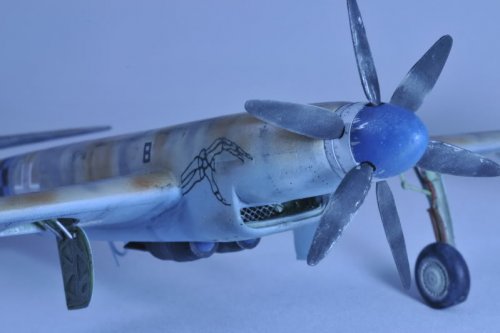
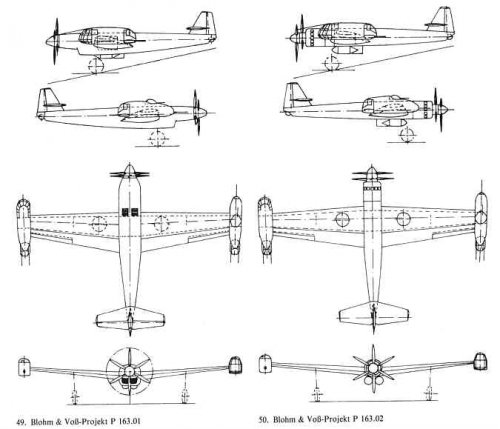


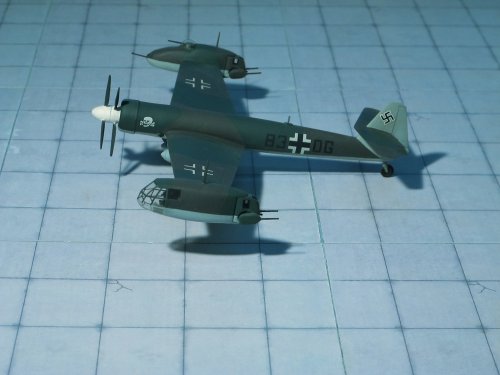

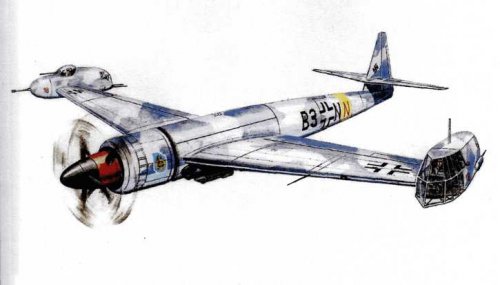
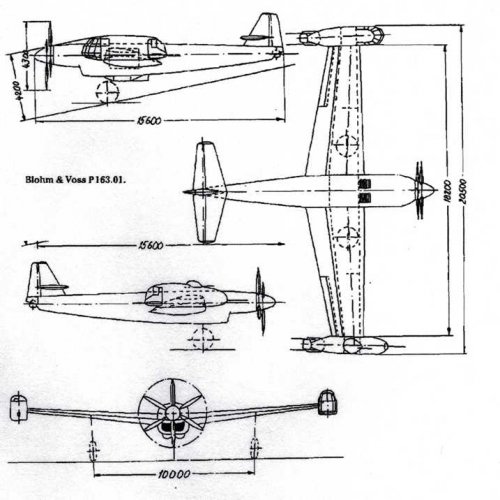
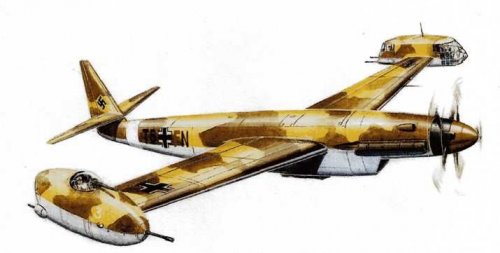
!
